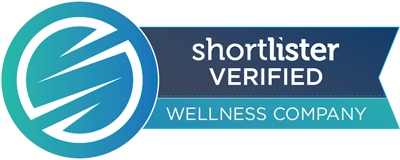
As vaccine rollouts ramp up their administration rates, businesses will have to begin considering a return-to-work action plan. Transitioning from a work-from-home business model to an in-office environment can put significant amounts of strain on not only your processes, but also your wellness initiatives. Workplace wellness, at its best, is able to facilitate and develop health-promoting routines and practices amongst its employees. The environment one works in, however, substantially disrupts and influences these routines. To successfully transition one’s work environment without damaging the quality of one’s workplace wellness, a balance needs to be struck between accommodation and standardization.
Flexibility is one of the most valuable qualities of any workplace wellness program. It allows users to personalize their goals, utilize a variety of resources, and access said resources from multiple locations. The key to remote work wellness is flexibility. Everyone is working different hours, in different locations, and sometimes, even in different time zones. Flexibility, while historically less prioritized for in-office work, will be imperative throughout this transition – especially if remote work is set to continue.
In a recent report on the future of work post-COVID-19, experts predict that about 20 to 25% of workforces in advanced economies will work from home between three and five days a week. This figure is five times greater than its corresponding, pre-pandemic numbers. If companies are to incorporate a hybrid work environment, the flexibility of one’s workplace wellness will become that much more paramount.
In addition to flexibility, HR managers should also consider the priority of certain universal resources, particularly those regarding mental health. Universally applicable resources, such as these, can stabilize a workplace’s wellness programs as they themselves transition into a different format.

Transitioning to an office environment, while different, will provide additional stressors that put a similar strain on one’s mental health. Recognizing the health-related risks of such a transition, it makes sense to prioritize mental wellness throughout this transitory period. In this same Deloitte report, researchers identified flexibility as a method of empowering their employees and providing them more ownership over their work schedule, arrangements, setup, etc. Flexibility, in this case, refers to the business model itself – not just workplace wellness. Fortunately, this is just one of the ways that employers can better support their workplace wellness initiatives during this transition.

The quality of an organization’s workplace wellness depends on the quality of its culture and resources. As recommended by McKinsey, employers that want to build workplace culture that prioritizes wellness and well-being should roll out self-reflexive measures like self-assessment exercises. These exercises allow employees to measure their current activities and routines against recommended goals or standards. Rather than having to convince users to engage with workplace wellness, users can instead utilize their current health status as internal motivation. Similarly, these exercises can act as an educational tool for understanding the range of factors that contribute to an individual’s overall well-being.
The Sprout at Work app offers employers, and their staff, the Sprout Real-Time HRA™, a short wellness survey that, combined with wearable or device activity, provides a dynamic wellness score, for an individual’s well-being, that updates as new activity data is synced. The algorithm used to calculate this score was developed by Stanford University and the University of Calgary to help employers and employees measure and record their workplace wellness. To learn more about the Sprout at Work app, book a discovery call with our team today.
